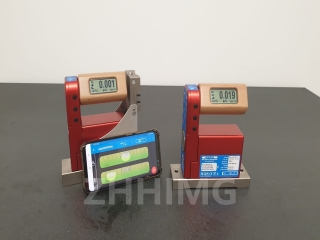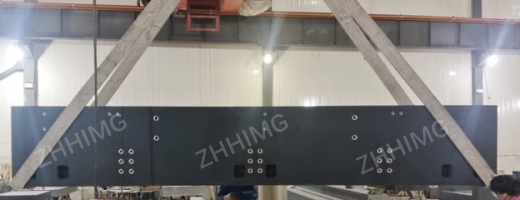In the field of scientific research, the repeatability of experimental data is a core element for measuring the credibility of scientific discoveries. Any environmental interference or measurement error may cause result deviation, thereby weakening the reliability of the research conclusion. With its outstanding physical and chemical properties, granite ensures the stability of experiments in all aspects from its material nature to structural design, making it an ideal base material for scientific research equipment.
1. Isotropy: Eliminating the error sources inherent in the material itself
Granite is composed of mineral crystals such as quartz, feldspar and mica evenly distributed, showing natural isotropic characteristics. This characteristic indicates that its physical properties (such as hardness and elastic modulus) are basically consistent in all directions and will not cause measurement deviations due to internal structural differences. For instance, in precision mechanics experiments, when samples are placed on a granite platform for loading tests, the platform's own deformation remains stable regardless of the direction from which force is applied, thereby effectively avoiding measurement errors caused by the anisotropy of the material's direction. In contrast, metallic materials exhibit significant anisotropy due to differences in crystal orientation during processing, which adversely affects the consistency of experimental data. Therefore, this characteristic of granite ensures the uniformity of experimental conditions and lays a solid foundation for achieving data repeatability.
2. Thermal stability: Resist the interference caused by temperature fluctuations
Scientific research experiments are usually highly sensitive to environmental temperature. Even minor temperature changes can cause thermal expansion and contraction of materials, thereby affecting measurement accuracy. Granite has an extremely low coefficient of thermal expansion (4-8 ×10⁻⁶/℃), which is only half that of cast iron and one-third that of aluminum alloy. In an environment with a temperature fluctuation of ±5℃, the size change of a one-meter-long granite platform is less than 0.04μm, which can almost be ignored. For instance, in optical interference experiments, the use of granite platforms can effectively isolate the temperature disturbances caused by the start and stop of air conditioners, thereby ensuring the stability of data during laser wavelength measurement and avoiding interference fringe offsets due to thermal deformation, thus guaranteeing good consistency and comparability of data at different time periods.
Iii. Outstanding vibration suppression capability
In the laboratory environment, various vibrations (such as equipment operation and personnel movement) are important factors affecting the test results. Thanks to its high damping characteristics, granite has become a kind of "natural barrier". Its internal crystal structure can rapidly convert vibration energy into thermal energy, and its damping ratio is as high as 0.05-0.1, which is much better than that of metallic materials (only about 0.01). For instance, in the scanning tunneling microscopy (STM) experiment, by using a granite base, over 90% of external vibrations can be attenuated within just 0.3 seconds, keeping the distance between the probe and the sample surface highly stable and thus ensuring the consistency of atomically level image acquisition. In addition, combining the granite platform with vibration isolation systems such as air springs or magnetic levitation can further reduce the oscillation interference to the nanometer level, significantly improving the experimental accuracy.
Iv. Chemical Stability and Long-term Reliability
Scientific research practice often requires long-term and repeated verification, so the requirement for material durability is particularly important. As a material with relatively stable chemical properties, granite has a wide pH tolerance range (1-14), does not react with common acid and alkali reagents, and does not release metal ions. Therefore, it is suitable for complex environments such as chemical laboratories and clean rooms. Meanwhile, its high hardness (Mohs hardness of 6-7) and excellent wear resistance make it less prone to wear and deformation during long-term use. Data shows that the flatness variation of the granite platform that has been in use for 10 years in a certain physics research institute is still controlled within ±0.1μm/m, laying a solid foundation for continuously providing a reliable reference.
In conclusion, from the perspective of microstructure to macroscopic performance, granite systematically eliminates various potential interfering factors with multiple advantages such as isotropy, excellent thermal stability, efficient vibration suppression ability, and outstanding chemical durability. In the field of scientific research that pursues rigor and repeatability, granite, with its irreplaceable advantages, has become an important force in ensuring true and reliable data.
Post time: May-24-2025


